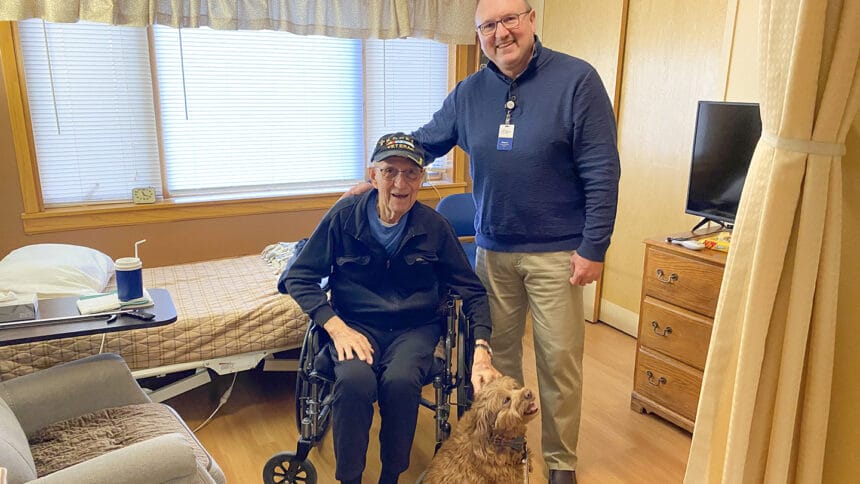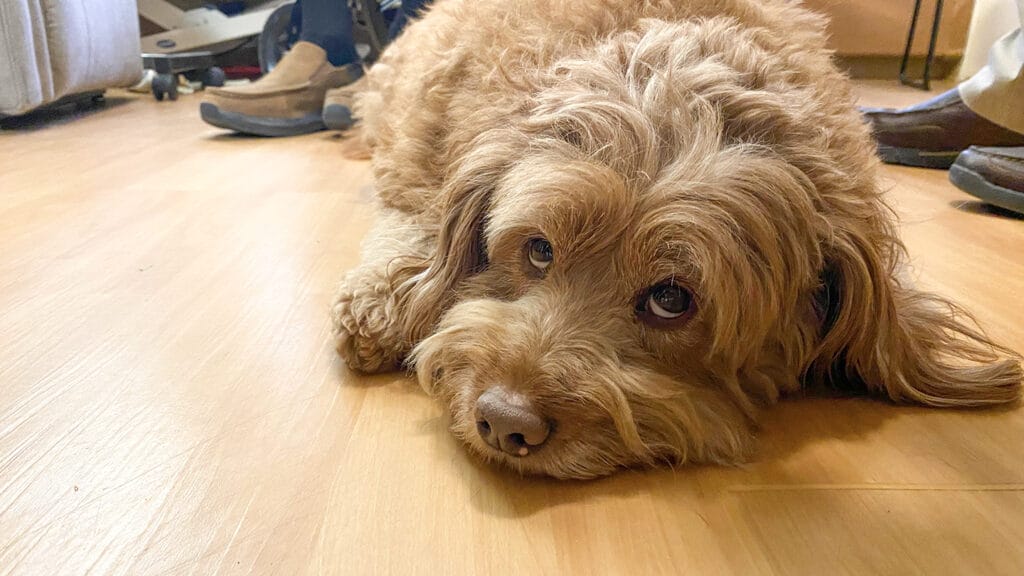
It’s not unheard of for nursing homes to bring pets and other animals to visit their residents, but not every facility has a caring canine making the rounds multiple times a week.
That, however, is exactly the arrangement between the Good Samaritan Society — Windom and Chewy, a mini golden doodle who has become such a part of the community that he wears an official employee badge on his collar.
Chewy’s owner, Brian Uhlenkamp, is director of social services at the 63-bed Windom, MN, nursing home. He says Chewy started visiting with him in 2022 and now comes in to work two or three times each week.
“He knows his way around the facility now — he kind of does his own rounds.” Uhlenkamp said.
Chewy’s name is a reference to Star Wars character Chewbacca. But despite looking the part, his name was actually inspired by the gurgly sounds he sometimes makes.
Excitable though he is, Chewy is also famously gentle and quiet with residents.
“He’s not a certified therapy dog, but in my mind he’s a God-certified therapy dog,” said Uhlenkamp.
Residents love visits from Chewy, and often ask about him on days when he doesn’t come in to work, according to Ralph Sweigard, a Good Samaritan resident and 91-year-old Korean War veteran.
“I haven’t seen any residents he doesn’t get along with,” Sweigard said. “I don’t think you have to worry too much about him. He’s good with people.”

Chewy is a calming presence at the facility, Uhlenkamp and Sweigard agreed. He gives residents consistent cute interactions to look forward to and can remind them of their own family pets.
The unofficial part-time care worker recently celebrated his 11th birthday with residents at the Minnesota facility. Uhlenkamp shared stories about Chewy and everyone enjoyed a giant cake in the dog’s honor. The little dog could tell he was the center of attention, Sweigard said.
The facility makes sure to account for any residents who might have a fear of dogs, Uhlenkamp noted, including during the admissions process.
While recognizing the importance of being careful to follow procedure and regulations, Uhlenkamp said that if it were up to him, more facilities would bring in animals regularly to enrich residents’ lives.
“It brings a different angle for people,” he said. “And, for a lot of people, there is memory attached to a pet — that feeling of comfort, joy and unconditional love and attachment you get from a dog…. In the role I do as a social worker here, it can benefit me, too, in the sense of having more of a connection with that resident that’s having a harder day or more of a challenge with memory or speech. The dog’s presence can be a reassuring comfort and draw the person out more.”





